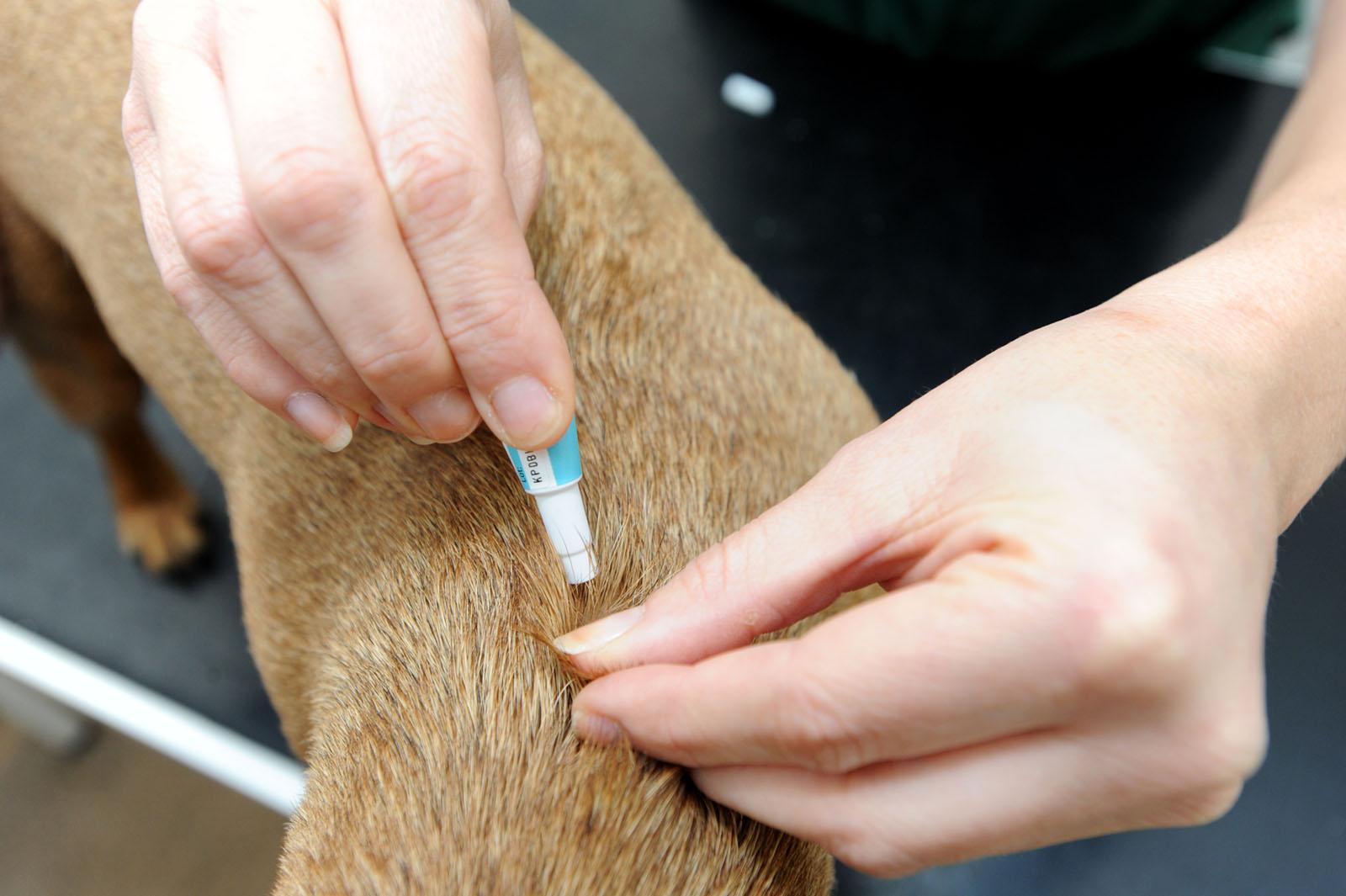Worm and Flea Treatment
There are 14 different species of worms that infect cats and dogs in the UK and how your pet becomes infected with which type depends on its life style.
For cats if they are hunters or out-door cats, they will need a regular worming programme; whereas if they are home buddies that never venture out of the door, then just a couple of times a year.
For dogs we recommend every three to four months, as just by walking in any infected area, i.e. parks, woods, anywhere other dogs have been, they can pick them up in their fur.
Obviously, if you see signs of worms then worm sooner.
Worm eggs can survive for years in the environment and can be very resistant to disinfectants, so by picking up your dogs’ faeces you are reducing the build up of worm eggs in the environment. Also remember children play in grass, sand and soil areas, and because worm eggs survive for a long period of time these can be quite easily picked up by them too, as well as yourselves.
Because we only worm our pets a couple of times a year people seem to get the impression that worming products last for a period of time after the worming preparation has been given, therefore preventing further infestation of worms. This is not true; worming products only kill the worms that are present in the guts at the time the worming preparation is given. It does not prevent further infestations occurring.
WORM SYMPTOMS
Clinical signs vary depending on the type of worm your pet picks up; these can include:
- Weight loss
- Poor coat
- Diarrhoea
- Vomiting
- Pot-bellies
- Bottom scooting
Listed below are some of the worms that we treat against and how the animal becomes infected.
TAPEWORMS
Signs Include:
- Segments seen around the anus or in the faeces
- Bottom scooting
- Presence of fleas
Dipylidium Caninum
These are passed on by the flea and infect both the cat and dog.
Taenia Spp
If your animal hunts and eats small prey, i.e. rodents, then there is a good chance they can become infected with this type of worm. Both cats and dogs can become infected.
Echinococcus Granulosus
Dogs that have access to carcases or fed raw offal of infected sheep are at risk of getting this worm. This worm is important as it is zoonotic and in humans, cysts will develop usually in the liver or lungs, but also occasionally elsewhere.
ROUNDWORMS
Toxocara Canis
These are picked up from contaminated areas; and for puppies they pass across the placenta and also via the mothers’ milk during lactation. The reason why you should worm your bitch at the same time as the puppies is because when the puppies pass faeces they contain worm eggs, the mother then cleans the pups and ingests the eggs. The eggs hatch out and the larva pass across in the milk when the puppies start feeding, they then grow into adult worms; and the whole cycle starts again. Again worming your bitch when she is pregnant stops the larva passing across the placenta to the unborn puppies where they will grow into adult worms. Take care when worming pregnant bitches, as not all worming products are safe to use.
Toxocara Canis
Toxocara Canis are zoonotic and children are more susceptible of catching them because they play in areas that could be contaminated, for example the grass in parks and sand pits. When the worm eggs are digested they hatch out and the larva then migrate to the eyes and can cause blindness.
Toxocara Cati
These are picked up from contaminated areas, small rodents and birds; and also kittens feeding from a lactating queen. These are also zoonotic as described above.
Toxascaris Leonina
Can affect both the cat and dog. These worms can be picked up in contaminated areas, or via a paratenic host. But it is more likely to be seen in dogs that are kennelled. Signs of the above worms are:
- Vomiting
- Potbellies in Puppies and Kittens
- Poor Growth in Puppies and Kittens
If left untreated these worms will cause an intestinal blockage, and at worse the animal then will die.
Lungworm
Dogs become infected with lungworm after they have eaten infective larvae that are found in slugs, snails and sometimes frogs. These worms are actually found in the heart and pulmonary arteries, not the intestines. The adult worms lay their eggs and when the larvae hatch they migrate into the airways of the lungs. As the animal coughs it brings up the larvae, which then is swallowed entering the digestive tract, where they are expelled in the dog’s faeces. The slugs, snails and frogs then pick them up from the environment and the whole cycle starts again. Symptoms to watch out for include breathing problems, coughing, tiring more easily, weight loss, vomiting, diarrhoea, loss of appetite, poor blood clotting from minor wounds, nose bleeds, bleeding into the eye, behavioural changes, spinal pain, seizures.
Hookworm
These worms are picked up from a contaminated environment, usually grass runs and kennelled areas. These worms just infect dogs. In small numbers, these worms can be tolerated, but a heavy burden can cause diarrhoea. A useful sign to look for is dermatitis on the food pads or other areas where the larva have penetrated the skin. Even though these worms are not zoonotic they are a health risk as they can still penetrate human skin and cause dermatitis.
Whipworm
These worms just infect dogs and are usually picked up from a contaminated environment. High-risk areas are dogs that are in permanent grass runs. Low levels of worms in the gut are usually well tolerated, whereas heavy infections will cause bloody, mucus diarrhoea.


